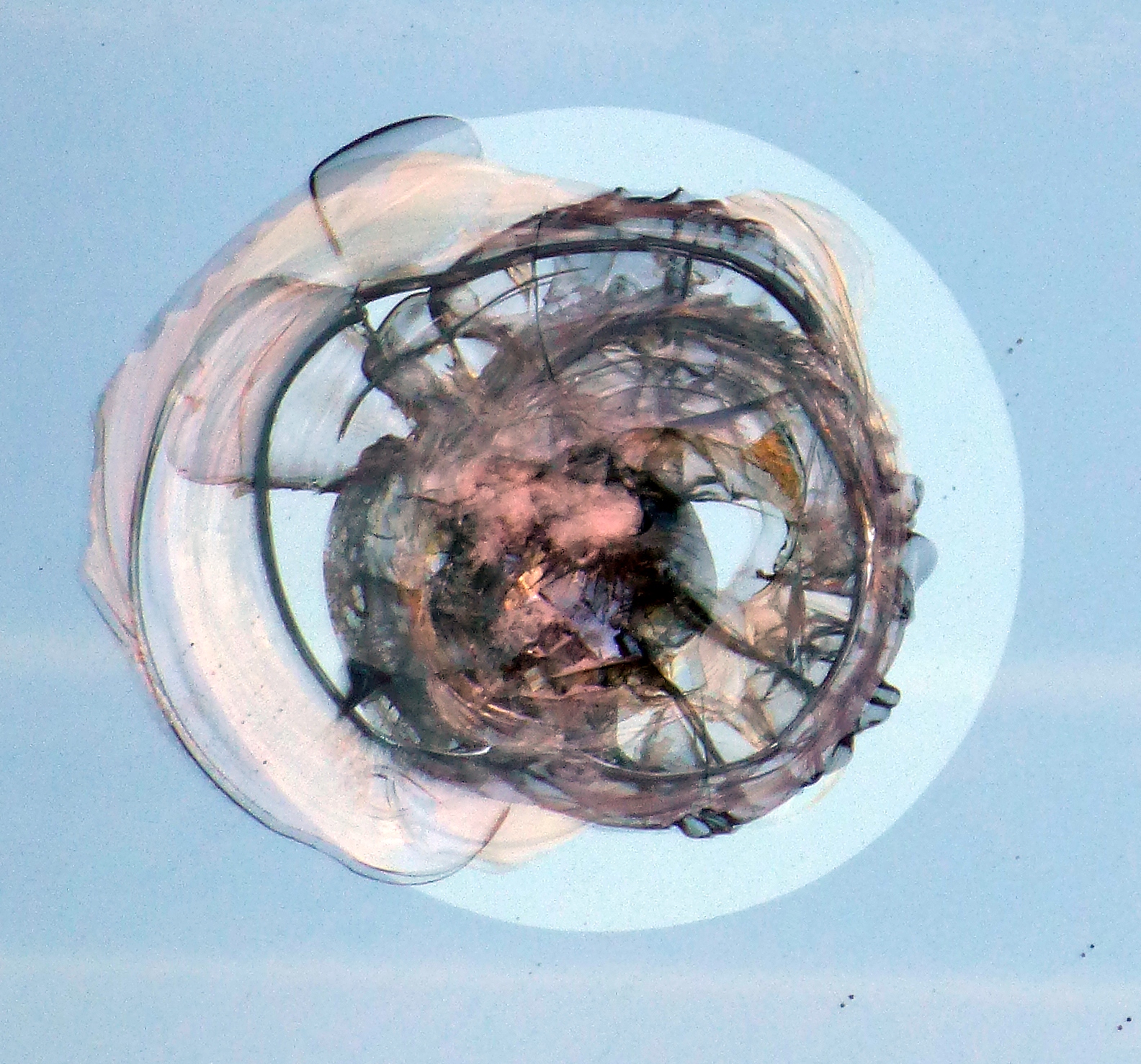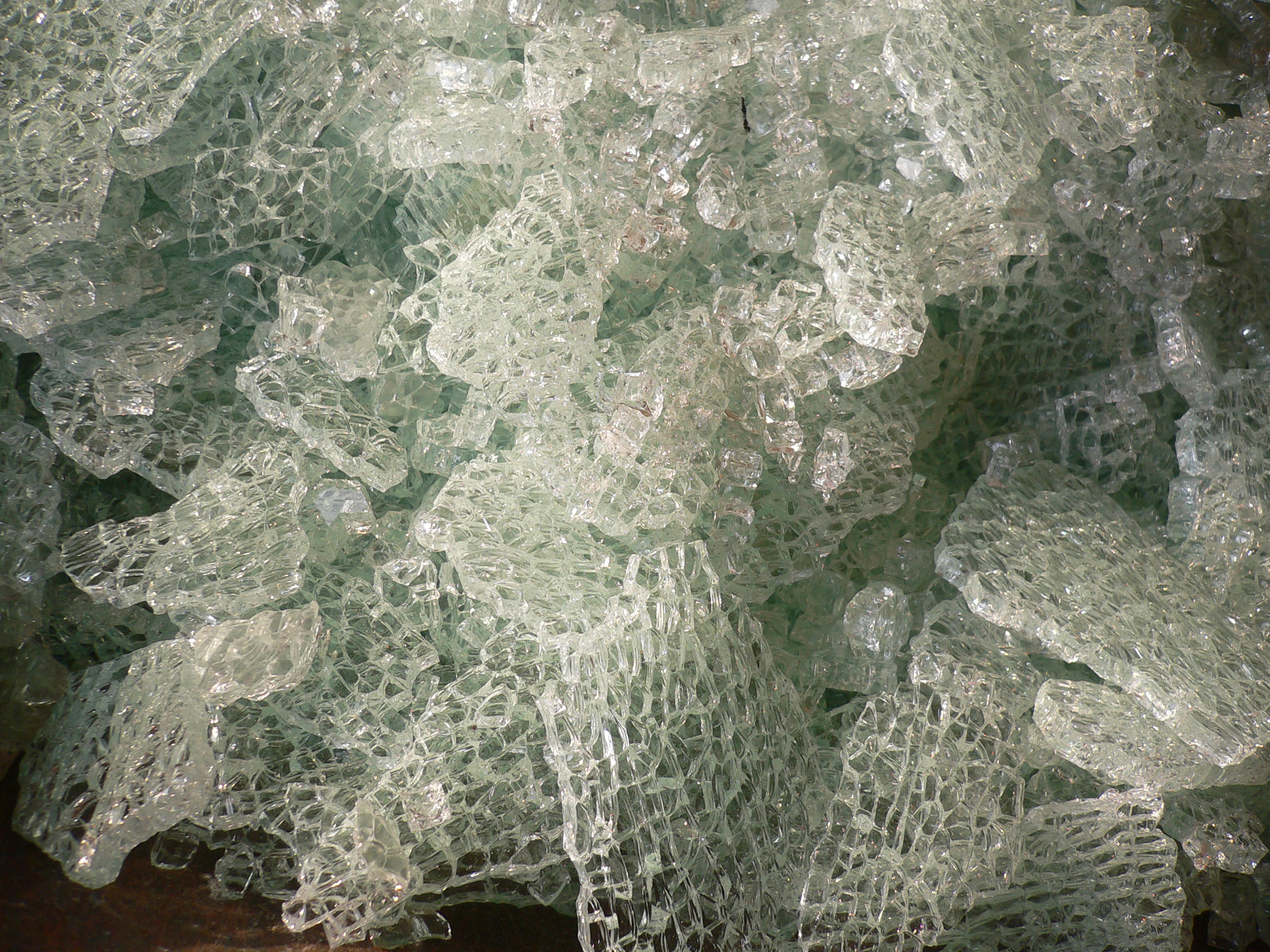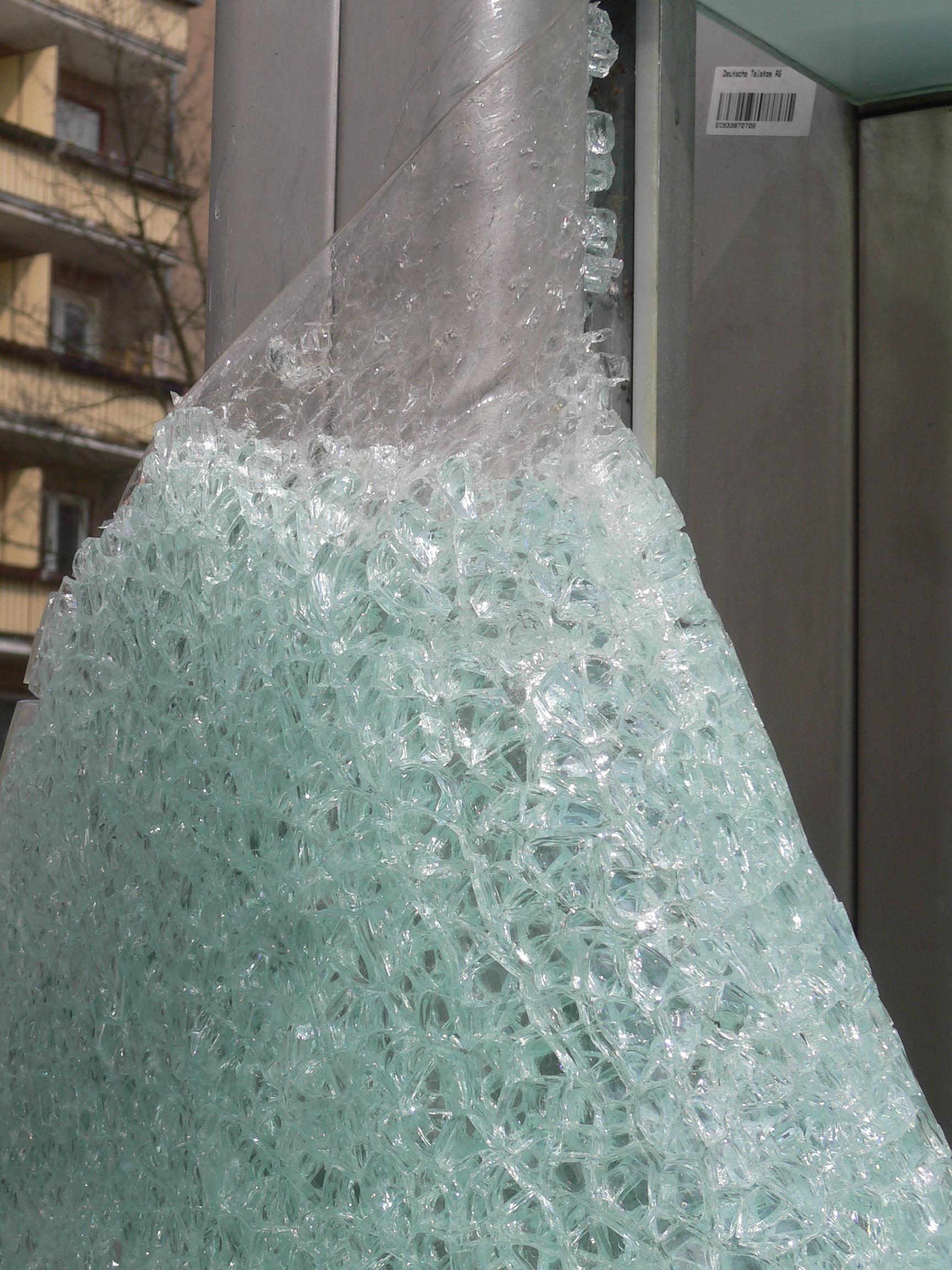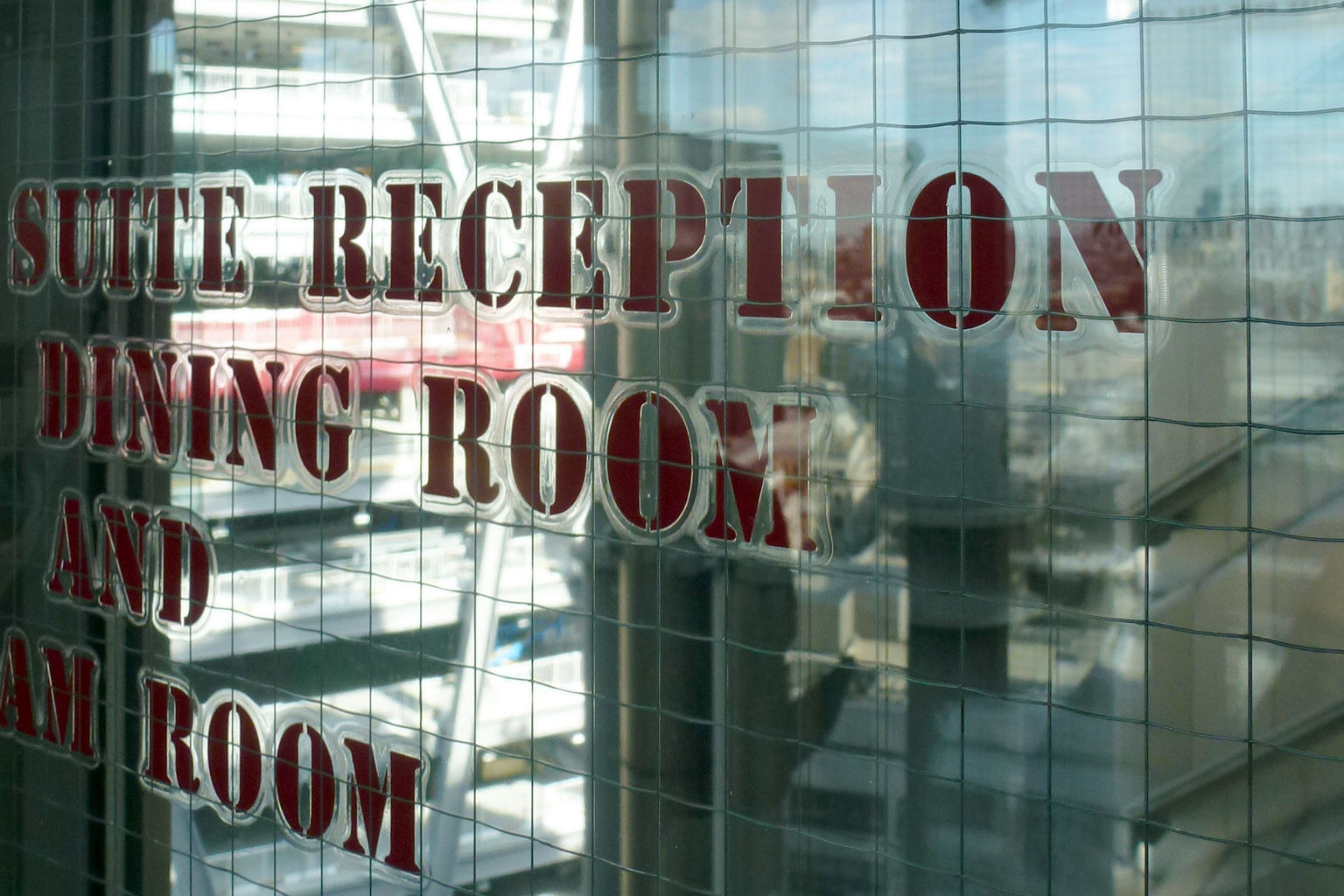safety glass on:
[Wikipedia]
[Google]
[Amazon]
 Safety glass is
Safety glass is
 Toughened glass is processed by controlled
Toughened glass is processed by controlled
 Laminated glass is composed of layers of glass and plastic held together by an interlayer. When laminated glass is broken, it is held in place by an interlayer, typically of
Laminated glass is composed of layers of glass and plastic held together by an interlayer. When laminated glass is broken, it is held in place by an interlayer, typically of
 Wire mesh glass (also known as Georgian Wired Glass) has a grid or mesh of thin metal
Wire mesh glass (also known as Georgian Wired Glass) has a grid or mesh of thin metal
 Safety glass is
Safety glass is glass
Glass is an amorphous (non-crystalline solid, non-crystalline) solid. Because it is often transparency and translucency, transparent and chemically inert, glass has found widespread practical, technological, and decorative use in window pane ...
with additional safety features that make it less likely to break, or less likely to pose a threat when broken. Common designs include toughened glass
Tempered or toughened glass is a type of safety glass processed by controlled thermal or chemical treatments to increase its strength compared with normal glass. Tempering puts the outer surfaces into compression and the interior into tension ...
(also known as tempered glass), laminated glass, and wire mesh glass (also known as wired glass). Toughened glass was invented in 1874 by Francois Barthelemy Alfred Royer de la Bastie. Wire mesh glass was invented in 1892 by Frank Shuman
Frank Shuman (; January 23, 1862 – April 28, 1918) was an American inventor, engineer and solar energy pioneer known for his work on solar engines, especially those that used solar energy to heat water that would produce steam.
Early life
Sh ...
. Laminated glass was invented in 1903 by the French chemist Édouard Bénédictus (1878–1930).
These three approaches can easily be combined, allowing for the creation of glass that is at the same time toughened, laminated, and contains a wire mesh. However, combination of a wire mesh with other techniques is unusual, as it typically betrays their individual qualities. In many developed countries safety glass is part of the building regulations making properties safer.
Toughened glass
 Toughened glass is processed by controlled
Toughened glass is processed by controlled thermal
A thermal column (or thermal) is a rising mass of buoyant air, a convective current in the atmosphere, that transfers heat energy vertically. Thermals are created by the uneven heating of Earth's surface from solar radiation, and are an example ...
or chemical treatments to increase its strength compared with normal glass. Tempering, by design, creates balanced internal stresses which causes the glass sheet, when broken, to crumble into small granular chunks of similar size and shape instead of splintering into random, jagged shards. The granular chunks are less likely to cause injury.
As a result of its safety and strength, tempered glass is used in a variety of demanding applications, including passenger vehicle windows, shower doors, architectural glass doors and tables, refrigerator trays, as a component of bulletproof glass
Bulletproof glass, ballistic glass, transparent armor, or bullet-resistant glass is a strong and optically transparent material that is particularly resistant to penetration by projectiles, although, like any other material, it is not completel ...
, for diving mask
A diving mask (also half mask, dive mask or scuba mask) is an item of diving equipment that allows Underwater diving, underwater divers, including scuba diving, scuba divers, free-diving, free-divers, and snorkeling, snorkelers, to see clearly u ...
s, and various types of plates and cookware. In the United States, since 1977 Federal law has required safety glass located within doors and tub and shower enclosures.
Laminated glass
 Laminated glass is composed of layers of glass and plastic held together by an interlayer. When laminated glass is broken, it is held in place by an interlayer, typically of
Laminated glass is composed of layers of glass and plastic held together by an interlayer. When laminated glass is broken, it is held in place by an interlayer, typically of polyvinyl butyral
Polyvinyl butyral (or PVB) is a resin mostly used for applications that require strong binding, optical clarity, adhesion to many surfaces, toughness and flexibility. It is prepared from polyvinyl alcohol by reaction with butyraldehyde. The m ...
(PVB), between its two or more layers of glass, which crumble into small pieces. The interlayer keeps the layers of glass bonded even when broken, and its toughening prevents the glass from breaking up into large sharp pieces. This produces a characteristic "spider web" cracking pattern (radial and concentric cracks) when the impact is not enough to completely pierce the glass.
Laminated glass is normally used when there is a possibility of human impact or where the glass could fall if shattered. Skylight
A skylight (sometimes called a rooflight) is a light-permitting structure or window, usually made of transparent or translucent glass, that forms all or part of the roof space of a building for daylighting and ventilation purposes.
History
O ...
glazing and automobile windshield
The windshield (American English and Canadian English) or windscreen (Commonwealth English) of an aircraft, car, bus, motorbike, truck, train, boat or streetcar is the front window, which provides visibility while protecting occupants from t ...
s typically use laminated glass. In geographical areas requiring hurricane-resistant construction, laminated glass is often used in exterior storefronts, curtain walls and windows. The PVB interlayer also gives the glass a much higher sound insulation rating The sound reduction index is used to measure the level of sound insulation provided by a structure such as a wall, window, door, or ventilator. It is defined in the series of international standards ISO 16283 (parts 1-3) and the older ISO 140 (par ...
, due to the damping
In physical systems, damping is the loss of energy of an oscillating system by dissipation. Damping is an influence within or upon an oscillatory system that has the effect of reducing or preventing its oscillation. Examples of damping include ...
effect, and also blocks most of the incoming UV radiation
Ultraviolet radiation, also known as simply UV, is electromagnetic radiation of wavelengths of 10–400 nanometers, shorter than that of visible light, but longer than X-rays. UV radiation is present in sunlight and constitutes about 10% of t ...
(88% in window glass and 97.4% in windscreen glass).
Wire mesh glass
 Wire mesh glass (also known as Georgian Wired Glass) has a grid or mesh of thin metal
Wire mesh glass (also known as Georgian Wired Glass) has a grid or mesh of thin metal wire
file:Sample cross-section of high tension power (pylon) line.jpg, Overhead power cabling. The conductor consists of seven strands of steel (centre, high tensile strength), surrounded by four outer layers of aluminium (high conductivity). Sample d ...
embedded within the glass. Wired glass is used in the US for its fire-resistant abilities, and is well-rated to withstand both heat and hose streams. This is why wired glass exclusively is used on service elevators to prevent fire ingress to the shaft, and also why it is commonly found in institutional settings which are often well-protected and partitioned against fire. The wire prevents the glass from falling out of the frame even if it cracks under thermal stress
In mechanics and thermodynamics, thermal stress is mechanical stress created by any change in temperature
Temperature is a physical quantity that quantitatively expresses the attribute of hotness or coldness. Temperature is measurement, m ...
, and is far more heat-resistant than a laminating material.
Wired glass, as it is typically described, does not perform the function most individuals associate with it. The presence of the wire mesh appears to be a strengthening component, as it is metallic, and conjures up the idea of rebar
Rebar (short for reinforcement bar or reinforcing bar), known when massed as reinforcing steel or steel reinforcement, is a tension device added to concrete to form ''reinforced concrete'' and reinforced masonry structures to strengthen and aid ...
in reinforced concrete
Reinforced concrete, also called ferroconcrete or ferro-concrete, is a composite material in which concrete's relatively low tensile strength and ductility are compensated for by the inclusion of reinforcement having higher tensile strength or ...
or other such examples. Despite this belief, wired glass is actually weaker than unwired glass due to the incursions of the wire into the structure of the glass. Wired glass often may cause heightened injury in comparison to unwired glass, as the wire amplifies the irregularity of any fractures. This has led to a decline in its use institutionally, particularly in schools.
In recent years, new materials have become available that offer both fire-ratings and safety ratings so the continued use of wired glass is being debated worldwide. The US International Building Code effectively banned wired glass in 2006.
Canada's building codes still permit the use of wired glass but the codes are being reviewed and traditional wired glass is expected to be greatly restricted in its use. Australia has no similar review taking place.
See also
* Architectural glassReferences
{{Fire protection Glass